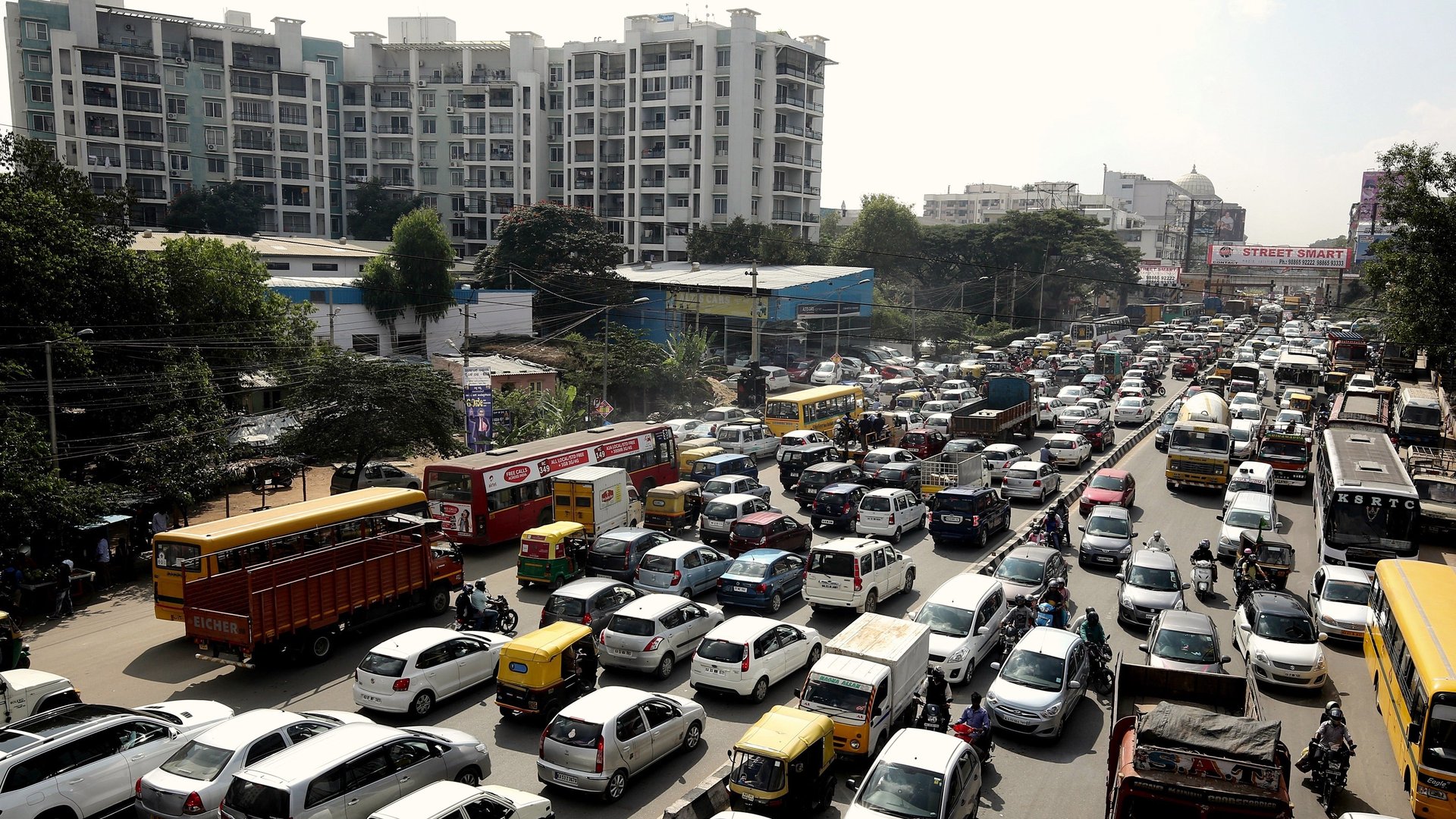Can Uber Pool really save Indian cities from pollution and congestion?
Last week, the southern Indian state of Karnataka warned Uber and Ola that their carpooling services were in violation of a law that barred multiple pick ups and drop offs during a single ride. The rivals operate with a “contract carriage permit, which is for point-to-point drops and not picking up customers in between,” the state’s transport commissioner MK Aiyappa said.


Last week, the southern Indian state of Karnataka warned Uber and Ola that their carpooling services were in violation of a law that barred multiple pick ups and drop offs during a single ride. The rivals operate with a “contract carriage permit, which is for point-to-point drops and not picking up customers in between,” the state’s transport commissioner MK Aiyappa said.
On Feb. 02, though, Uber refused to withdraw its ride-sharing services, arguing that no law was being broken since drivers and riders all mutually agree to share the trip. Picking up and dropping passengers, “included in the contractual understanding with the driver,” isn’t unlawful, the company said in a statement. To garner support, it floated a signature campaign, which had 15,000 signatories by the next morning.
“Technology today provides an alternative to a world that looks like a parking lot and moves like a traffic jam. If there is one city in the country that needs these solutions more than any other—it is Bangalore,” the San Francisco-based ride-sharing company wrote in its petition. In an ideal world, overcoming India’s contentious regulatory ecosystem would be the final step to make carpooling a success.
However, for reasons completely out of its control, Uber Pool is far from being the savior of congested and polluted Indian cities. Providing shared rides in a culture that prides in private cars is hard enough. Uber also forgets that the office-goers it hopes to woo have been using company-provided shared transport for years. To add to the chaos, commercial cab firms are fighting an unwinnable battle against India’s creaky infrastructure.
🏁
Saving the world—but hardly
The obvious reason for a passenger to use an Uber Pool or Ola Share ride is that it’s cheaper. However, the big sell that cab aggregators use to make peace with people (read: governments) is that carpooling is environment-friendly.
Over the last year-and-a-half, Uber Pool rides in five Indian cities have apparently saved over 1.5 million litres of fuel, thereby reducing carbon dioxide (CO2) emissions by 3.5 million kilograms (calculated by comparing overlap miles in matched Uber Pool trips with solo trips). Ola’s carpooling feature, available in 15 cities, supposedly cut back on four million litres of fuel, effectively reducing CO2 emissions by 6.5 million kgs.
These numbers don’t tell the full story, though.
It’s difficult to evaluate if those savings are actually remarkable as there is no empirical research or benchmark for emissions savings from carpooling in India, says Gaurav Dubey, program manager for the Clean Air and Sustainable Mobility Programme at the Centre for Science and Environment. While there is a case to be made for UberPool rides substituting for pollution-spitting cars where taxis are mandated to run on clean fuel—like in the National Capital Region (NCR)—until the service effectively drives hoards of people to give up their personal cars, it cannot be marked a win.
Unfortunately, private car owners aren’t your typical Uber Pool ride hailers. ”It is likely that those using UberPool would have been using either an auto-rickshaw, metro or bus prior to using UberPool. These are the passenger segments for whom the tradeoffs between extra time spent in sharing an Uber ride matches with the value they put in savings on cost,” Dubey told Quartz in an email. “Someone who can afford a personal car trip would likely go for Uber and not UberPool.” In that case, “there may not be any realistic emission savings,” he says.
🏁
Daily commute struggles
In theory, Uber Pool is a perfect solution for office-goers who commute the same fixed distance daily.
But practically speaking, these cab aggregators are already late to the game. In major industrial hubs like Gurgaon, Pune, and Bengaluru, sharing rides to and from work is commonplace—and offered by employers like Microsoft and Mindtree.
“Most of these companies already have the concept of shared cabs,” Deepesh Rathore, director of automotive research and advisory firm Emerging Market Automotive Advisors, told Quartz in an interview. “They were using carpooling but not calling it that.” Unless company-sponsored rides cease, commuters have little incentive to switch to private carpooling. (Let’s not forget the added caveat of convincing people to ride with strangers, instead of known colleagues.)
And then there are the Indian roads.
🏁
Roadblock
Research in New York revealed that carpooling with two riders—if done right—can reduce total travel times by 40%. But Indian roads are a different creature. For instance, Manhattan’s streets and avenues follow an easily navigable grid system. In contrast, most Indian roads are not only arbitrarily connected, but the mapping apps used by cab aggregators are also vastly flawed. Often, the inaccuracies in directions make the driver overshoot pick up and drop-off points.
In most countries, the roads are built first, then reliable mass transit systems are created. Following that, corporations set up shop. India somehow skipped the second step. ”We invited companies and offices to employ thousands of people without giving them a mode of commute,” Rathore says. “In the end they ended up using their own personal cars.”
Cities like Gurgaon (now Gurugram) are now an “infrastructural volcano,” according to Rathore. India records an embarrassingly high rate of fatalities from car crashes every year, owing to its bad drivers and bad roads. Taking a few cars off the road isn’t going to do much here. What the country needs is not carpooling but trillions of dollars worth of infrastructural investment.